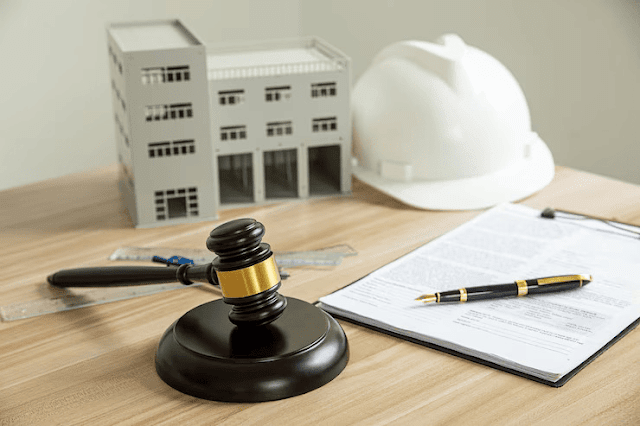Right to Repair vs. Right to Sue: What Every Developer Needs to Know
In today’s fast-paced construction world, understanding your legal rights is crucial, especially when it comes to handling defects and repairs. The Right to Repair Act in California has become a significant topic for builders and contractors who want to protect their interests while ensuring quality work. If you’re a developer, knowing the difference between the right to repair and the right to sue can save you time, money, and stress down the road.
What is the Right to Repair Act in California?
The right to repair act in California is a legal framework designed to give homeowners and developers a chance to fix construction defects before jumping into costly lawsuits. This law encourages open communication and resolution between builders and property owners. It provides a structured process where the builder has an opportunity to inspect and repair any alleged defects within a set period.
For developers, this means you’re not immediately exposed to litigation if a construction problem arises. Instead, you have a chance to address issues directly with the property owner, maintaining a positive reputation and avoiding long legal battles.
Understanding the Right to Repair
The right to repair is all about fixing the problem first. When a homeowner or property owner discovers a defect, the builder is given the chance to inspect and repair the issue before any legal action takes place. This process often includes:
- Notification: The homeowner formally notifies the builder about the defect.
- Inspection: The builder inspects the issue to determine if it falls under the repair requirements.
- Repair Period: The builder is given a reasonable amount of time to fix the problem.
This approach helps keep disputes out of the courtroom by focusing on practical solutions. For developers and contractors, it provides a buffer period to demonstrate your commitment to quality and customer satisfaction.
What Does the Right to Sue Mean?
In contrast, the right to sue is the homeowner or property owner's ability to take legal action against a builder if they believe the construction defect wasn’t adequately addressed. If the builder fails to repair the defect within the designated time or refuses to cooperate, the property owner can file a lawsuit to seek compensation for damages.
While the right to sue is essential for protecting property owners, it can be costly and time-consuming for developers and contractors. Lawsuits can damage your professional reputation and tie up your resources in lengthy legal battles.
Why Developers Should Care About These Rights
For developers, understanding these rights is more than just a legal formality. It impacts your daily operations and long-term business success. Here’s why:
- Protect Your Reputation: Addressing repair issues early prevents negative reviews and legal disputes that can harm your standing in the industry.
- Save Money: Lawsuits and court fees can be expensive. The right to repair helps avoid these costs by encouraging direct resolution.
- Build Trust: Showing willingness to fix problems strengthens relationships with clients and buyers.
- Reduce Delays: Legal battles can stall new projects. Resolving defects early keeps construction timelines on track.
The Construction Defect Attorney’s Role
Despite the protections offered by the right to repair, sometimes disputes escalate beyond repairs. When that happens, a skilled construction defect attorney becomes vital. These legal professionals specialize in construction law and understand the nuances of defect claims, repair obligations, and litigation.
If a homeowner decides to exercise their right to sue, having an experienced construction defect attorney on your side can make all the difference. They can help negotiate settlements, defend against unfair claims, and guide you through the complex legal landscape.
How the Right to Repair Act Affects Builders and Contractors
As a builder or contractor, you’re at the frontline of construction defect claims. The Right to Repair Act in California sets clear rules you need to follow, including:
- Timely Responses: You must respond promptly to defect notifications.
- Document Repairs: Keep thorough records of inspections, communications, and repairs made.
- Meet Deadlines: Complete repairs within the specified period to avoid legal action.
- Quality Workmanship: Ensure repairs meet industry standards to prevent repeated issues.
Failing to adhere to these requirements can open the door to lawsuits, penalties, and costly settlements. Staying informed and proactive about your repair obligations is essential to protecting your business.
Practical Tips for Developers to Navigate Repair and Litigation Risks
- Communicate Clearly: Maintain open and transparent communication with homeowners. Explain repair timelines and processes upfront.
- Document Everything: Keep detailed records of all defect reports, repair efforts, and correspondence.
- Conduct Thorough Inspections: Before handing over projects, perform careful quality checks to minimize defects.
- Invest in Training: Ensure your team understands construction standards and legal requirements to reduce errors.
- Seek Legal Counsel Early: When defects arise, consult with a construction defect attorney before responding to claims or notices.
The Bottom Line: Balancing Repair and Litigation
For developers and contractors, balancing the right to repair with the right to sue is about managing risk and maintaining professionalism. The Right to Repair Act offers a valuable chance to fix problems before they escalate while understanding the right to sue prepares you for potential legal challenges.
By embracing the right-to-repair process, you can often avoid lawsuits altogether. However, when litigation is unavoidable, having a trusted construction defect attorney ensures your interests are protected.
Final Thoughts
The Right to Repair Act in California is an essential law that every developer and contractor should know. It emphasizes repairing defects promptly and responsibly, reducing the need for costly lawsuits. However, the right to sue remains a powerful tool for property owners, underscoring the importance of following repair obligations closely.
If you’re a builder or contractor facing construction defect issues, it’s wise to familiarize yourself with both rights and prepare accordingly. Partnering with a knowledgeable construction defect attorney can help you navigate this complex area, safeguard your business, and continue building strong, reliable projects.

.png)

Comments
Post a Comment